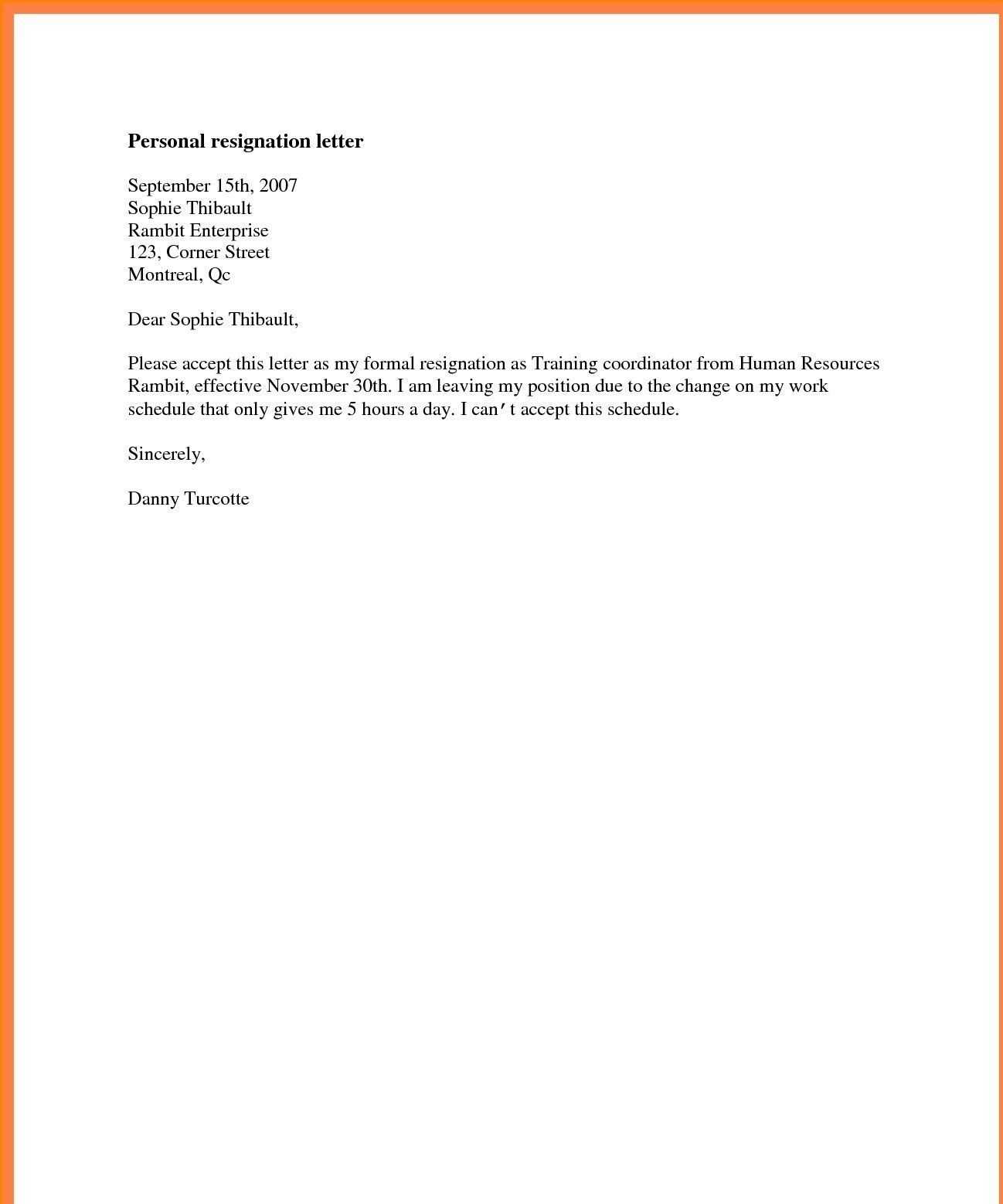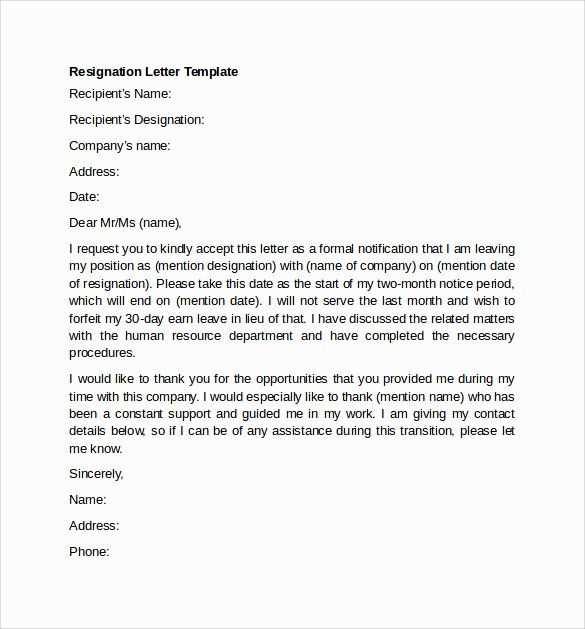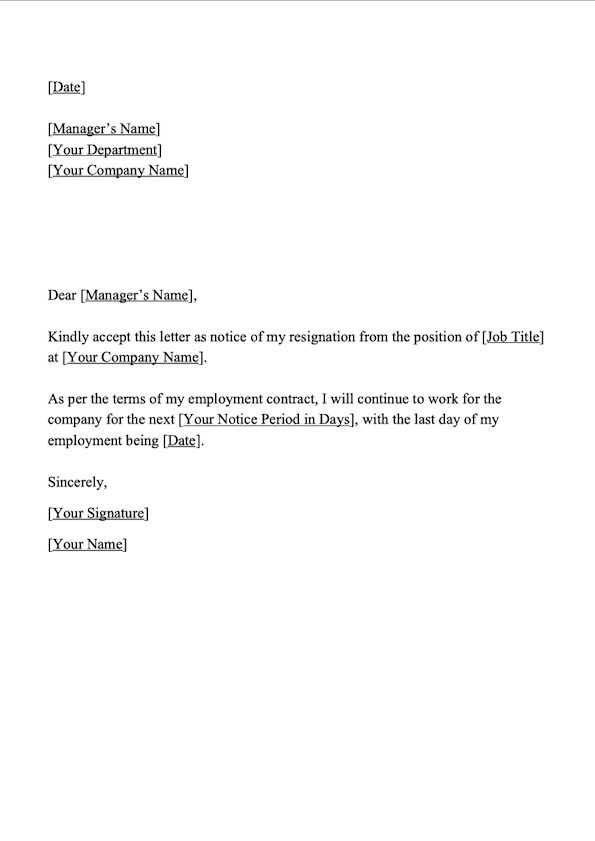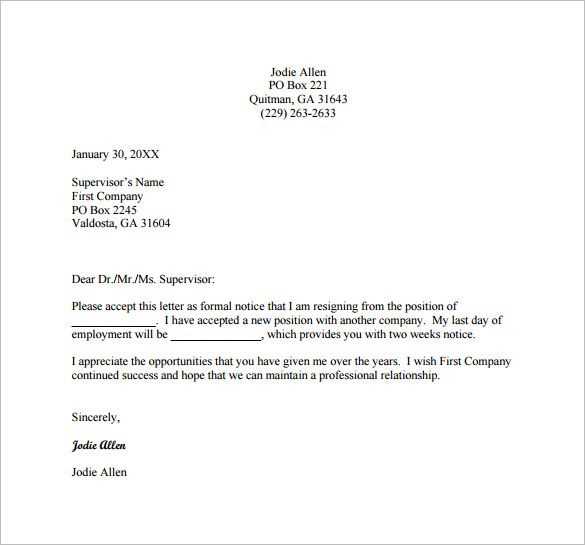Resignation Letter Template for Hostile Work Environment

Leaving a difficult professional situation can be challenging, but expressing your decision in a respectful and composed manner is essential for maintaining your integrity and reputation. A well-written statement can help you leave with dignity, while also protecting your future career opportunities. Here’s how to approach this situation thoughtfully and without burning bridges.
Understanding the Need for a Professional Exit

Sometimes, employees find themselves in an environment where they feel mistreated or undervalued. Whether due to inappropriate behavior or overwhelming stress, choosing to move on can be the best decision. A clear and polite declaration of your intent to leave is crucial in these cases. It allows you to exit on your own terms, without unnecessary conflict.
Key Elements of a Respectful Departure
When deciding to step away from an unpleasant situation, it’s important to maintain professionalism. A few important aspects to include are:
- Clear Intent: State your decision to part ways without ambiguity.
- Brief Explanation: Keep it concise and avoid venting or blaming others.
- Gratitude: Even in difficult circumstances, thank your employer for the opportunity.
- Respectful Tone: Be polite and avoid inflammatory language.
Crafting Your Departure Statement

Your statement should be simple yet professional. Here’s an example to guide you:
Dear [Manager's Name], I am writing to inform you of my decision to resign from my position at [Company Name], effective [Date]. While I have learned a great deal during my time here, I believe it is time for me to pursue other opportunities. I appreciate the chance to have worked with the team and wish everyone continued success. Sincerely, [Your Name]
Next Steps After Submitting Your Notice

Once you’ve submitted your statement, prepare for the next steps in transitioning out of the company. Here are some recommendations:
- Plan your final days carefully, wrapping up tasks and providing a clear handover if needed.
- Stay professional and avoid discussing personal grievances with colleagues.
- Maintain a positive outlook, as future references from your employer can be important.
Exiting a challenging situation is never easy, but handling it with tact and professionalism will ensure you leave with dignity and maintain your career path moving forward.
Why You Might Need to Step Away from an Unpleasant Situation
There are times when staying in a job becomes unsustainable due to negative conditions. Whether due to stress, poor management, or unhealthy relationships, choosing to leave can often be the best option for personal well-being. Knowing when and how to exit with professionalism ensures that you maintain your dignity and protect your future career prospects.
Recognizing a Toxic Atmosphere
Understanding the signs of an unhealthy atmosphere is crucial. These can include consistent disrespect, lack of support, or an overwhelming sense of negativity that affects your productivity and mental health. When these signs become too much to handle, it may be time to consider moving on.
Essential Elements of a Professional Exit
A well-thought-out decision to leave should include a clear statement of your intentions, a concise explanation, and a respectful tone. This approach helps preserve your reputation and avoids burning bridges. Keep it simple, direct, and focused on your personal need for change rather than pointing fingers.
Maintaining Professionalism in Difficult Times
Staying composed during this transition is essential. Despite the challenges, always remain courteous and avoid emotional reactions that could escalate the situation. Focus on moving forward and keeping the exit process as smooth as possible. This ensures that you leave on good terms, even in a tough situation.
How to Draft a Clear Statement of Departure
Being concise and clear in your communication is key. A professional exit statement should express your intent to leave without unnecessary details or negative commentary. Here’s an example of how you might structure it:
Dear [Manager's Name], I am writing to inform you of my decision to resign from my position at [Company Name], effective [Date]. I believe it is time for me to pursue other opportunities. Thank you for the experience, and I wish the team continued success. Sincerely, [Your Name]
Actions to Take After Submitting Your Departure Notice
Once you’ve handed in your statement, begin preparing for your next steps. This includes tying up loose ends, handing over any ongoing tasks, and leaving a positive impression behind. Maintaining professionalism throughout your remaining time ensures that you leave with your integrity intact and minimizes any negative impact on your career trajectory.